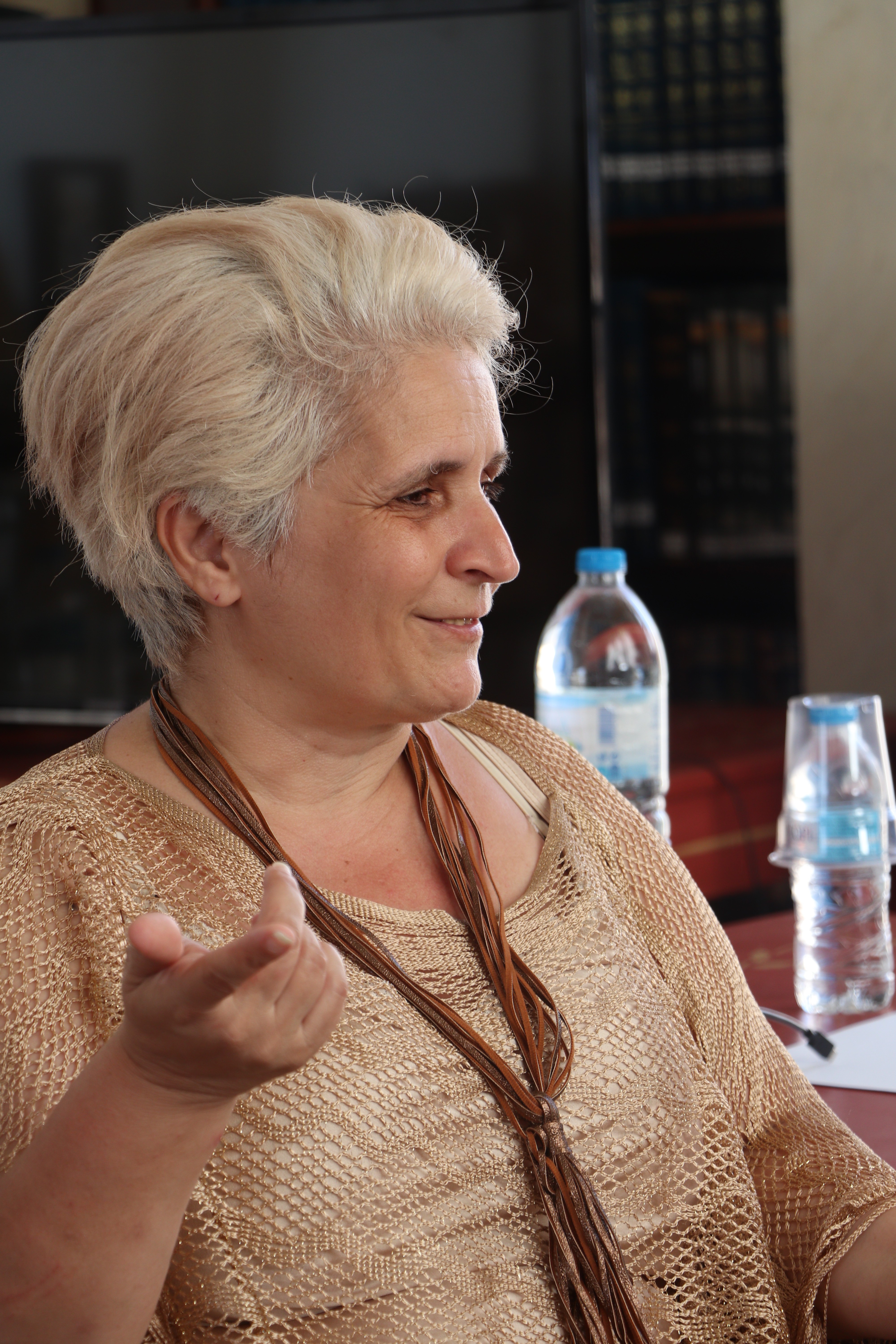Maria Vigliraki: The (gate)keeper of Kasos’ Maritime Memory

“How can a small, windswept, grungy island in the southern Aegean become a global cartography of memory?” Kassos is a dot in the map; it is a small island in the southernmost part of the Aegean Sea. It’s rich history not only captivates tourists on the go but also history lovers like Maria Vigliraki, whose been working on its naval history.
In the small library of Kassos, 3 feet away from the see stands Maria Vigliraki, a quiet yet smiley person, one responsible for keeping Kassos naval history alive. Maria does what most can’t, she explains things in a way where you feel as if you’re really there. Through her extensive research on multimedia virtual tours, archaeology and cultural heritage documentation, she aims to show how traditional research-work and new technologies can help each other. “With AI, you can recreate the entire picture. We wanted to recognise as many people as we can.”
By all meaning, Kasos is a humble island — rugged, wind-blown, perched on the southern edge of the Aegean Sea as Maria has implied. But to her, it is a cartographic treasure chest of forgotten epics, familial legacies, and an astonishing maritime past. Through her research, this small dot on the map is becoming a living museum of memory, of forgotten stories.
"They are living testimonies, echoed in homes, courtyards and community gatherings"
Maria invites every person not just to listen, but to feel the island’s past echoing through every knock on the church bell of Saint Spiridon, every rusted anchor falling in the port of Fry, and every lullaby from grandmother to grandchild. “They are living testimonies, echoed in homes, courtyards and community gatherings, where stories were shared with the laughers, tears and the rustling of old envelopes, and still, and until recently, dangerous close to oblivion”
In the 19th century, Kasos stood as an unlikely maritime powerhouse. Despite its dry soil and harsh terrain, it was a center of shipbuilding and nautical trade. Karavokyrides — local captains and shipowners — commanded fleets that reached as far as Sulina, Port Said, Beira, and Boston. The island’s fate was not merely tied to the sea. The Ottoman-Egyptian slaughter in 1824, known locally as the Holocaust of Kassos, aimed to extinguish the Kassyot population. Yet it instead became a rallying point in local and ethnic consciousness. These were preserved in oral testimonies, family trees.

From lawyer to the voice of forgotten stories
Maria's path to becoming one of the storytellers of this naval history was far from easy. At first she was drawn to criminal law, wanting to become the new Agatha Christie, then shifting into journalism and marketing, when she eventually returned to academia. In 2016, she entered a new intellectual chapter, studying the civilizations of the Black Sea, Romanian language, and cultural history It was not until her PhD under the guidance of the professor at the Institute for Mediterranean Studies that Kassos entered her life. Tasked with building a prototype museum of oral history using digital tools and artificial intelligence, Maria turned her attention to the small Aegean island. Since July of 2024, she has traveled there seven times, embedding herself in the social fabric of the island with the tenacity of a detective and the sensitivity of an ethnographer.
"The strong people were the mothers"
The story of Kassos isn’t kept in well-preserved registries. It survives in the hidden corners: Behind the saint icons where birth dates were penciled in, in the paratsoukli (nicknames) used in place of surnames. “There are brothers and sisters with different surnames,” Maria notes, revealing the weird sense of oral and bureaucratic identity.
Her research is archival in one sense, but deeply human in another. Photographs create recollections; interviews lead to the remembrance genealogy trees; a wedding contract from 1865 spirals into a narrative of love, loss, and migration.
Kassos, the matriarch of the Aegean
Interestingly, while much of her research emphasizes shipbuilding and male-dominated professions, Maria uncovers a deeply matriarchal culture born out of necessity. With men often gone for years at sea, women ruled the domestic and financial spheres. “They had the money,” Maria says with quiet admiration. “The strong people were the mothers.”
Widows wore black for life, mirrors were covered in mourning, and family honor was policed through strict codes of marriage and behavior. Traditions, despite diaspora and modernization, persisted fiercely — sometimes awkwardly so. She felt like a stranger when she first came to the island. “I was called a stranger, but now I feel welcomed”, she says while laughing.
Maria does not live in Kassos — her home is in Rethymno, Crete, where she raises her children and works with the Institute of Mediterranean Studies. But in spirit, she lives through the island’s memory. “If I start something, I want to finish — and finish it well,” she says. To her, the work in Kasos is not just academic; it's a moral calling, a calling to unite broken families.’’

A Digital Resurrection
At the heart of her work is the digitization of 7,000+ glass plate and medium-format negatives. These images reveal not only Kasos' visual past but invite the integration of AI technologies to identify faces, link families, and reconstruct vanished social networks.
“The negatives, glass-plated negatives, we digitised like this. Because it's very difficult, very fragile. We put, all the room was dark. Lead, professional lead panel. And we photograph them. All the plates”. Maria said, that the whole process was hard and there still is remaining work to do, but that won’t stop her.
Yes, Kassos is a small island, but that doesn’t mean that its history is little. Kassos is a nice example of how people with spite can do whatever they put their minds to.
Text : Léna Romieu, George Rampotas, Julia Gaul
Photos : Parmida Bayat
